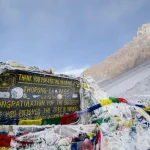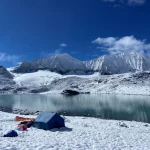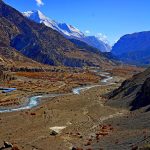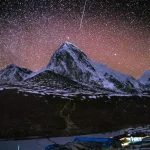Annapurna Sanctuary Trek: Nepal’s Sacred Himalayan Adventure
The Annapurna Sanctuary Trek, also known as the Annapurna Base Camp trek, is a breathtaking journey into a natural amphitheater at 4,130 meters (13,549 feet) within the Annapurna Conservation Area.
This iconic trek offers 360-degree views of towering peaks like Annapurna I (8,091m), the sacred Machapuchare (Fishtail), and Annapurna South. Perfect for trekkers seeking a blend of stunning scenery, cultural immersion, and moderate high-altitude adventure, the Annapurna Sanctuary Trek is a highlight of Nepal’s Himalayan trails.
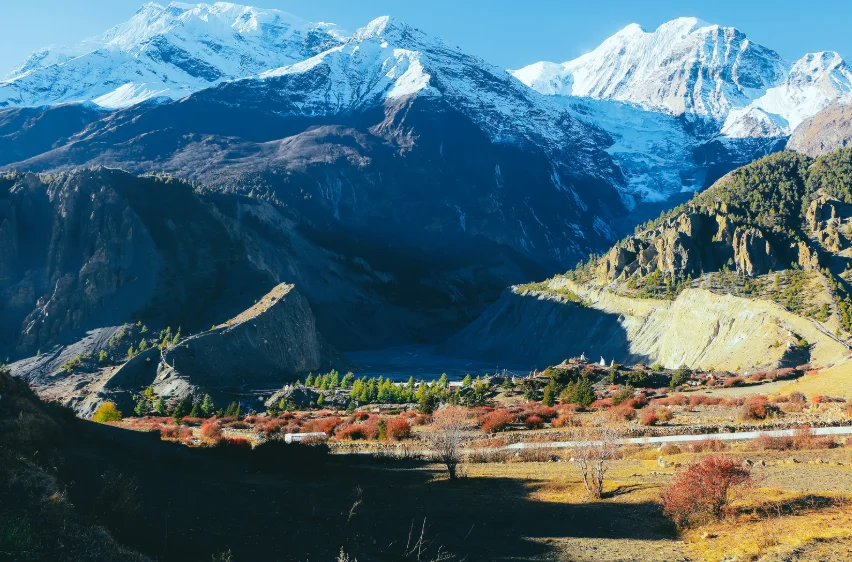
The Sacred Annapurna Sanctuary: A Himalayan Gem
The Annapurna Sanctuary is a unique geological basin encircled by massive peaks, accessible via the narrow Modi Khola gorge. Revered by Gurung communities as a sacred abode of mountain deities, this protected basin features a microclimate supporting diverse flora and fauna. Towering peaks like Annapurna I, the world’s tenth-highest mountain, and the unclimbed Machapuchare (6,993m) dominate the skyline, their fish-tail silhouette adding spiritual and visual grandeur to the Annapurna Sanctuary Trek.
The sanctuary’s dramatic walls rise over 3,000 meters above the base camp, creating an awe-inspiring setting that feels both isolated and sacred, perfect for trekkers seeking a profound Himalayan experience.
Annapurna Sanctuary Trek Route and Itinerary
The Annapurna Sanctuary Trek route spans 10–14 days, starting from Pokhara with a drive to Nayapul or Ghandruk. The trail winds through terraced hills, rhododendron forests, and traditional villages before entering the Modi Khola gorge.
Key stops include Ghandruk (1,940m), known for Gurung culture, Chhomrong (2,170m), the sanctuary’s gateway, and Bamboo (2,310m) with its lush forests. The final ascent passes Deurali (3,230m) and Machapuchare Base Camp (3,700m) before reaching Annapurna Base Camp, where trekkers are immersed in a Himalayan panorama.
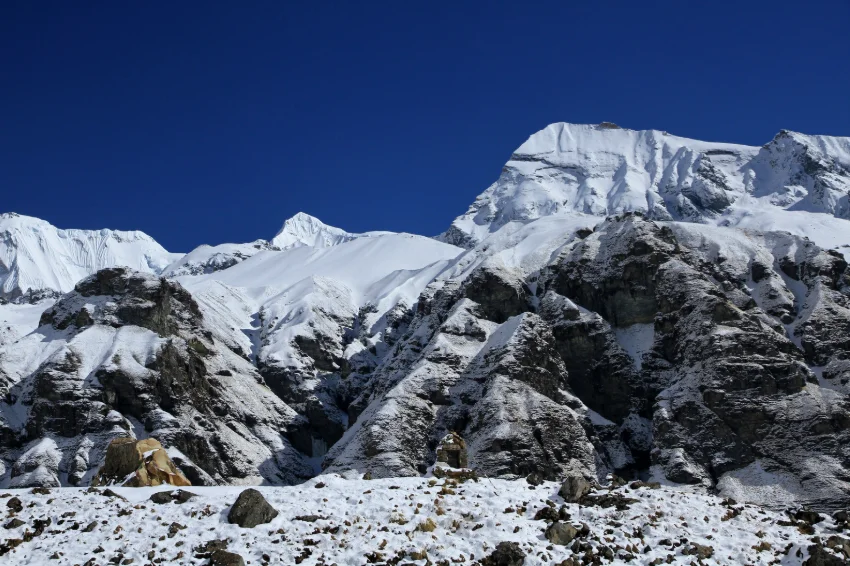
Stunning Views and Photography Opportunities
The Annapurna Sanctuary Trek offers unparalleled photography opportunities, with sunrise and sunset casting golden hues over peaks like Annapurna I, II (7,937m), III (7,555m), IV (7,525m), Annapurna South (7,219m), Machapuchare, Hiunchuli (6,441m), and Gandharva Chuli (6,248m).
At base camp, trekkers are enveloped by towering ice and rock walls, with alpenglow creating dramatic effects. Clear nights reveal star-filled skies, ideal for astrophotography, while shifting clouds add dynamic beauty to the Himalayan landscape, making this trek a photographer’s paradise.
Cultural Immersion in Gurung and Magar Villages
The Annapurna Sanctuary Trek cultural experience immerses trekkers in Gurung and Magar traditions. Ghandruk, a model village, showcases stone houses, cultural museums, and crafts like weaving. Villages like Chhomrong offer homestays and authentic dal bhat meals, fostering interactions with locals practicing Hindu and Buddhist rituals. These encounters highlight the resilience of mountain communities and their sustainable agricultural practices, including terraced farming of rice and millet.
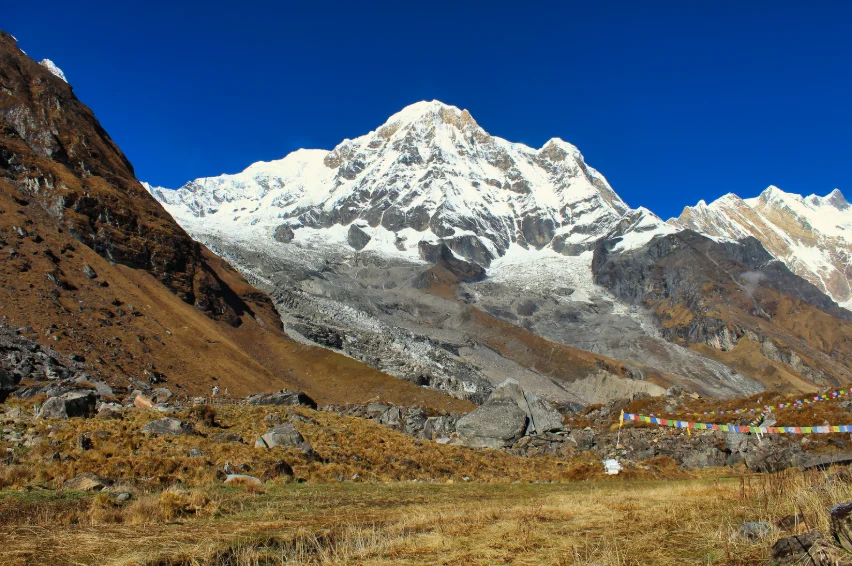
Flora and Fauna of the Annapurna Conservation Area
The Annapurna Conservation Area on the Annapurna Sanctuary Trek is a biodiversity hotspot, with over 1,226 plant species, 102 mammals, and 474 birds. The trail transitions from subtropical sal forests to oak, rhododendron, and bamboo groves, culminating in alpine meadows. Spring (March–May) brings vibrant rhododendron blooms, Nepal’s national flower, alongside orchids and magnolias.
Wildlife includes Himalayan tahr, musk deer, and birds like Himalayan monals and blood pheasants, enriching the trekking experience.
Best Time for the Annapurna Sanctuary Trek
The best time for the Annapurna Sanctuary Trek is pre-monsoon (March to May) and post-monsoon (September to November), offering clear skies and mild temperatures. Spring features blooming flora, while autumn provides crisp air and optimal peak visibility.
Winter (December to February) brings cold and potential snow at higher elevations, challenging for trekkers. The monsoon (June to August) causes heavy rain, muddy trails, and poor visibility, making it unsuitable for the Annapurna Sanctuary Trek.
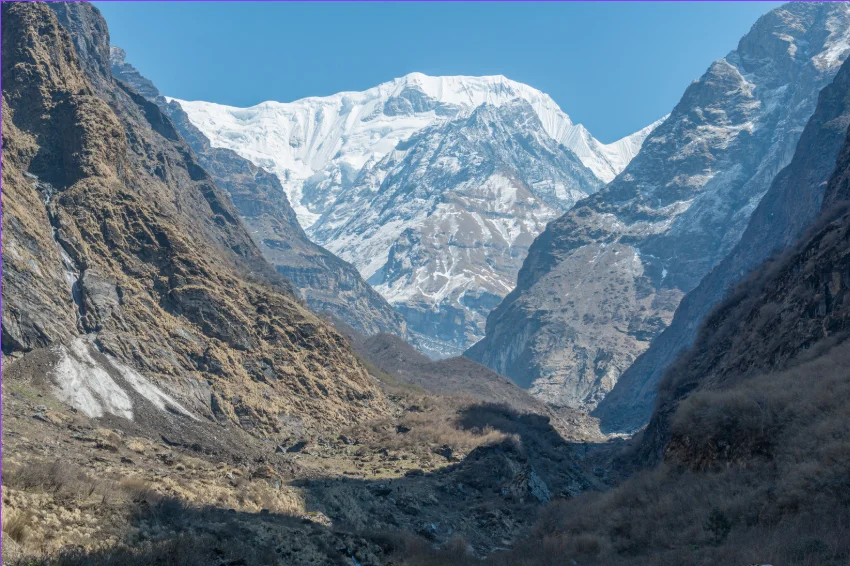
Preparation and Fitness for the Annapurna Sanctuary Trek
Annapurna Sanctuary Trek preparation requires moderate fitness for 4–8 hours of daily hiking across elevations from 1,000 to 4,130 meters. Training should include cardiovascular exercises, leg strength workouts, and hiking with a weighted pack.
Acclimatization is crucial to avoid altitude sickness, with symptoms like headaches monitored closely. Carrying AMS medications like Diamox and a first-aid kit is recommended. The trek suits beginners with proper training, making it an accessible Himalayan adventure.
Essential Gear and Packing Tips
For the Annapurna Sanctuary Trek, essential gear includes layered clothing, waterproof jackets, trekking boots, a sleeping bag rated for -10°C, and trekking poles. Additional items like headlamps, sunglasses, high-SPF sunscreen, and water purification tablets are vital for high-altitude conditions. Gear can be rented in Kathmandu or Pokhara, but boots should be broken in beforehand to prevent blisters on the trail.
Tea House Experience and Local Cuisine
The Annapurna Sanctuary Trek tea house experience offers cozy lodging and authentic Nepalese cuisine, including dal bhat, momos, and local teas. Family-run tea houses provide clean rooms, shared bathrooms, and communal dining areas for cultural exchanges.
Higher-altitude lodges offer warm bedding and device charging, with stunning terrace views enhancing the trekking experience. These interactions with Gurung and Magar families add warmth and authenticity to the journey.
Environmental Conservation
The Annapurna Conservation Area is ecologically sensitive, and trekkers on the Annapurna Sanctuary Trek must follow Leave No Trace principles, packing out waste and minimizing impact. Climate change affects glaciers and water sources, altering trails.
Using reusable water bottles and supporting local conservation efforts ensures the sanctuary’s pristine beauty endures for future trekkers and wildlife.
Book this trek from HERE
